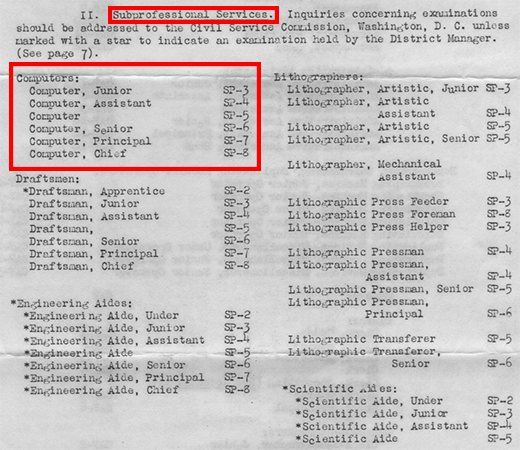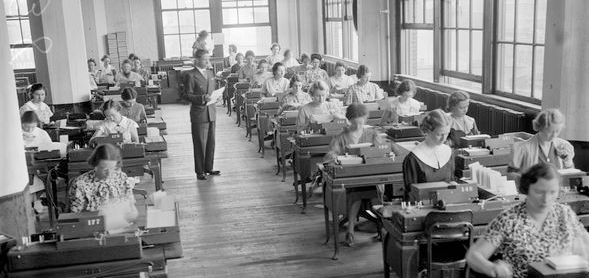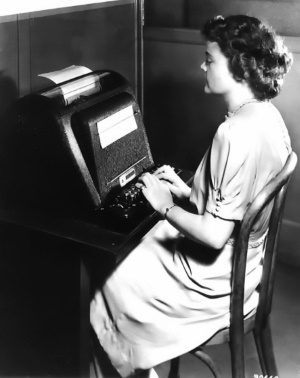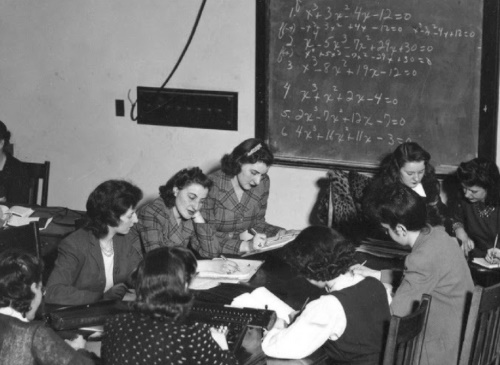
Excerpt of a U.S. War Department report indicating the subprofessional status of computers in the U.S. Civil Service, 1940, NASA.

Historical Context - When Women Were Computers

Entry into the Computing Field
The computing industry started to boom during the turn of the 20th century. Computing opportunities began to open to women. Even though some held math or science degrees, most of the women who worked in the computer field during this period were restricted to low-paid clerical positions.

Punch-card operators working at the Baltimore Social Security office, 1937, Computer History Museum.

Teletype operator using the complex number calculator, 1940, Computer History Museum.
World War II Computers
During World War II, there was a shortage of male mathematicians to do computations for firing tables. The Ballistic Research Laboratory (BRL) began hiring women mathematicians, referred to as "computers," to perform these calculations. By 1945, more than 100 women were working at the BRL to calculate firing tables. Six of these women were chosen to program the ENIAC.

Women computers learning differential equations at the Ballistic Research Laboratory during World War II, National Women's History Museum.
Excerpt of "Human Computers" video discussing the need for women computers during World War II and how the ENIAC Six were selected to program the ENIAC, 2011, Computer History Museum.

Gender Barriers
Although more women were entering the computing field, they still faced gender barriers that prevented them from advancing. Even though women computers played a critical role in the war efforts, computers were assigned subprofessional status by the U.S. Civil Service. Hardware development, which was performed mostly by men, was considered more prestigious work and received higher pay. There was a glass ceiling that kept women in low-paying and low-status computing positions with limited opportunities to advance.


Excerpt of a U.S. War Department report indicating the subprofessional status of computers in the U.S. Civil Service, 1940, NASA.